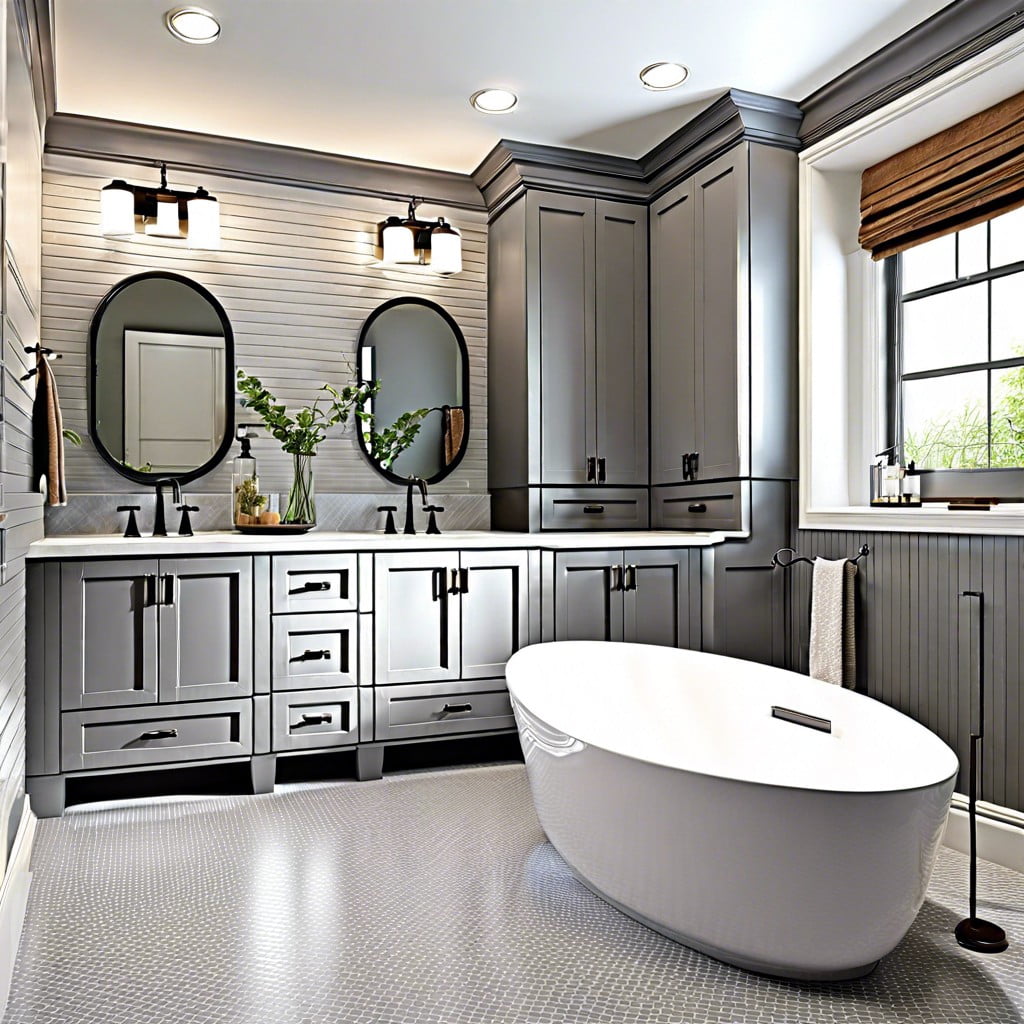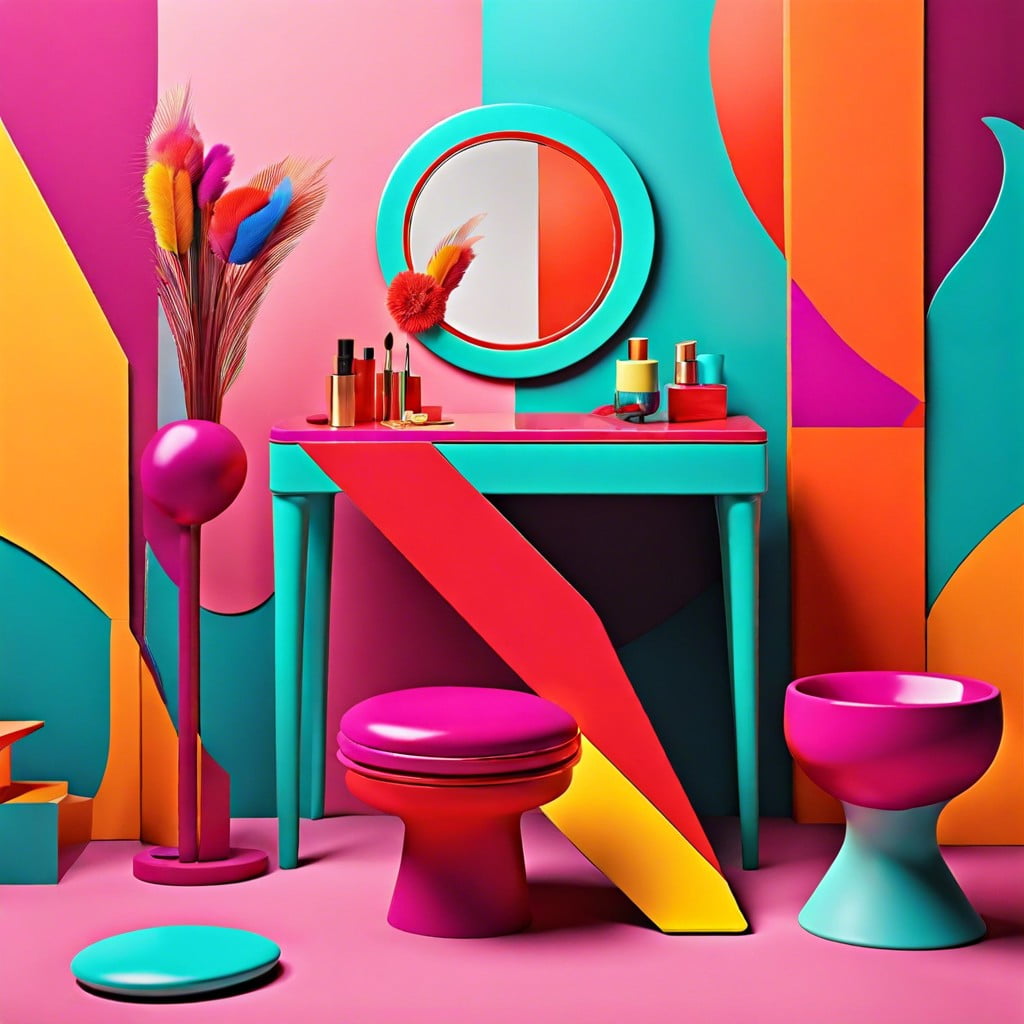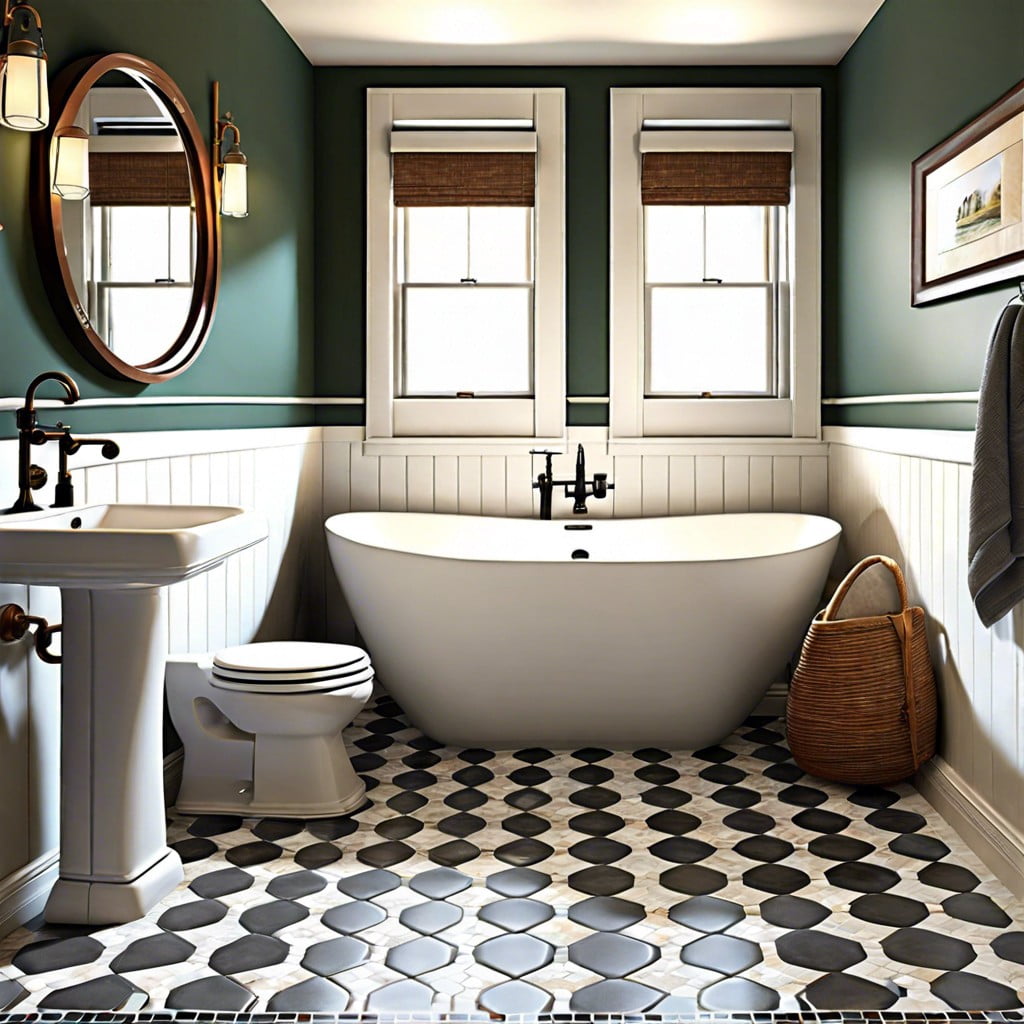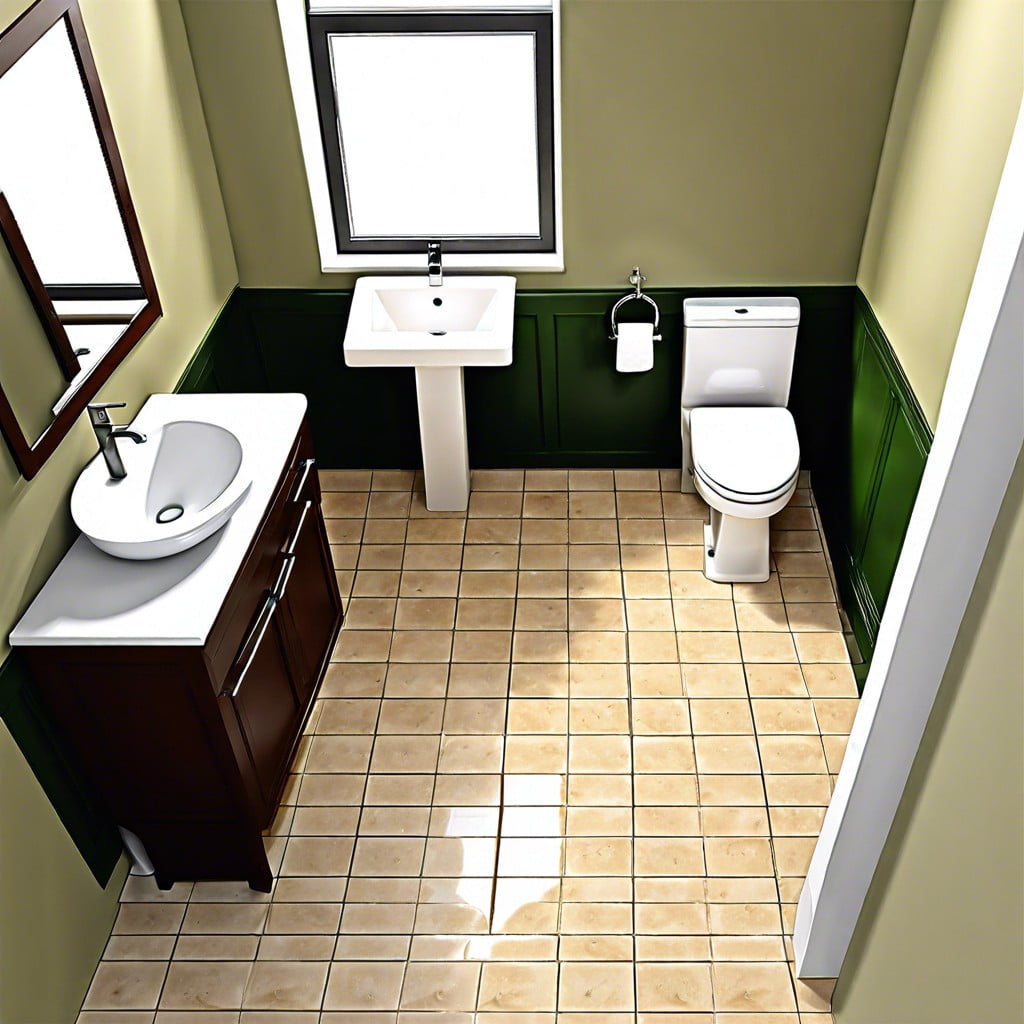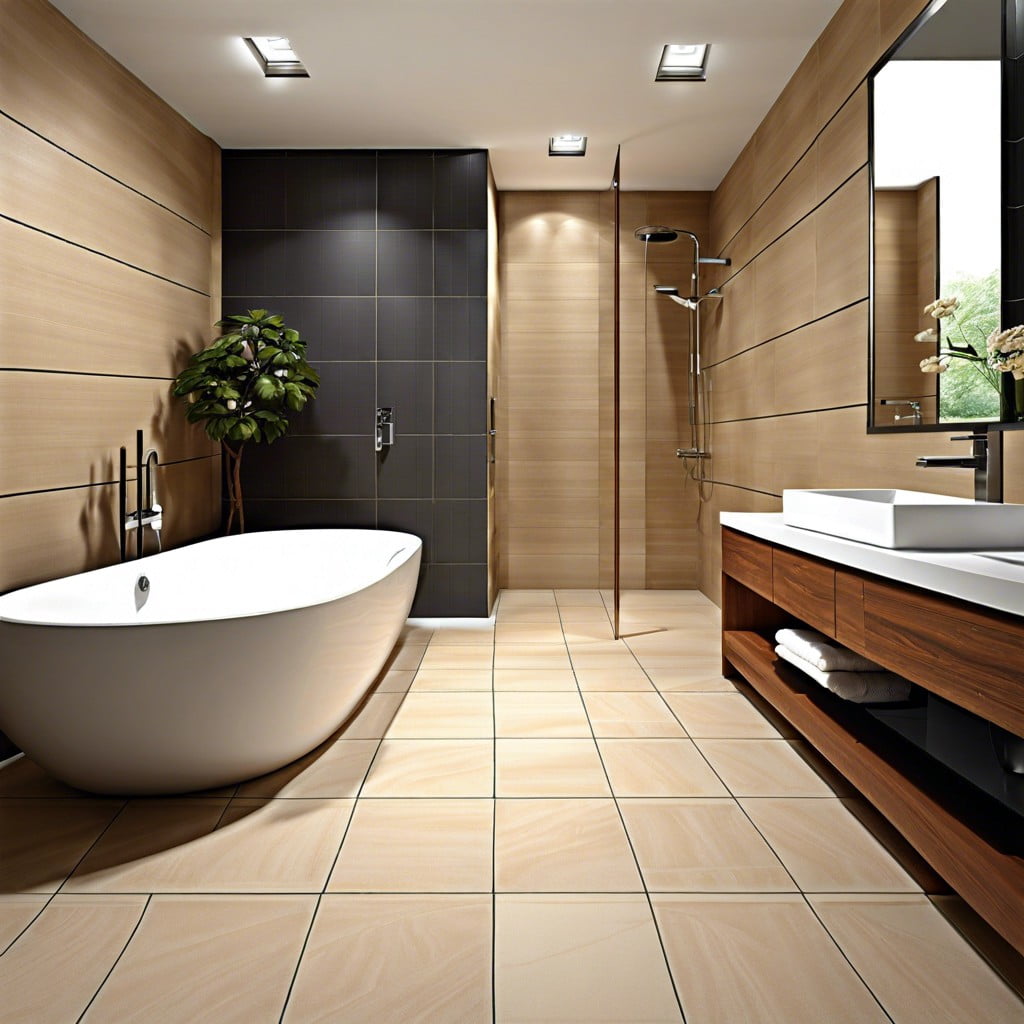Last updated on
Discover the trending bathroom paint colors for 2024 that will transform your personal oasis into a chic and contemporary space.
Key takeaways:
- Sothing nature-inspired hues dominate bathroom spaces
- Deep, saturated earth tones bring grounding and stability
- Consider the impact of lighting on paint color perception
- Natural light influences how paint colors appear in a space
- Test paint samples under different lighting conditions before deciding
Emerging Bathroom Paint Colors for 2024
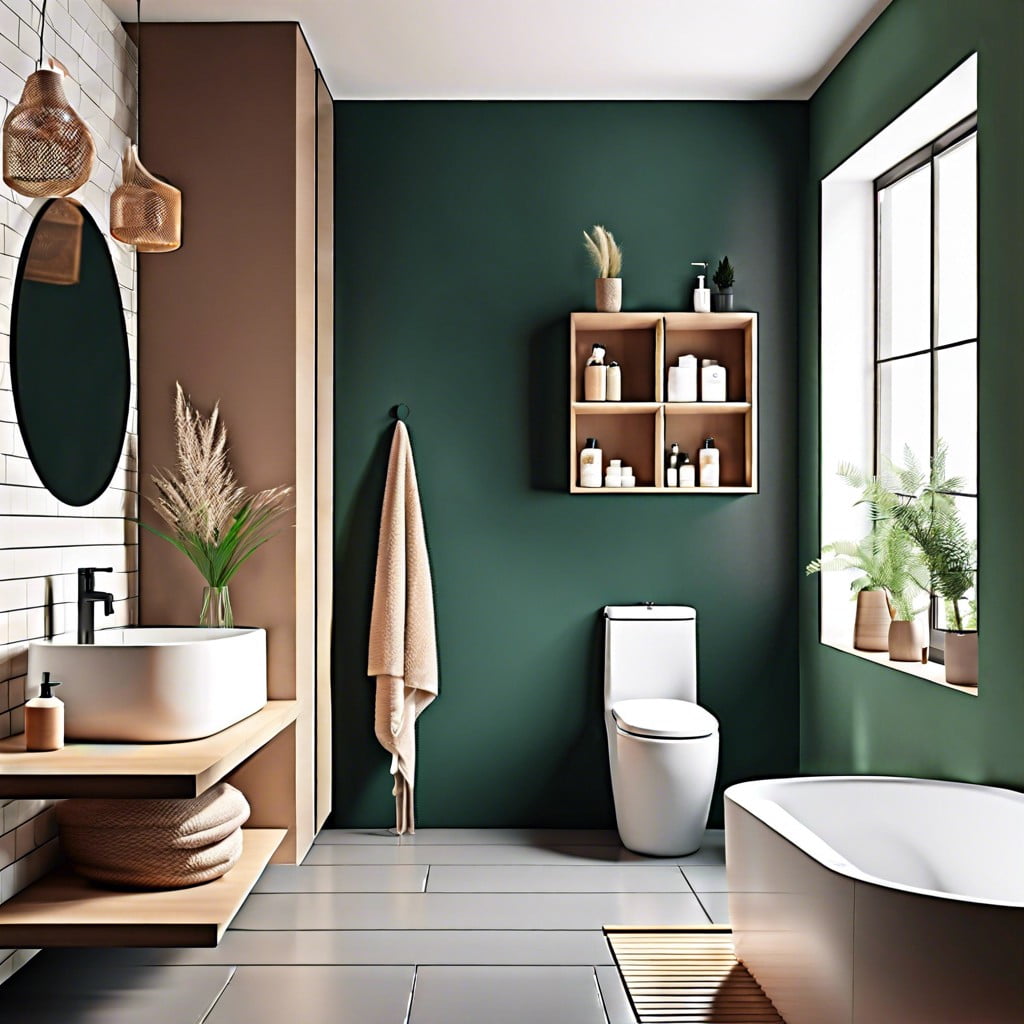
Gravitating towards tranquility, consumers are increasingly embracing soothing nature-inspired hues. Picture the serene blues of a coastal sky or the gentle greens of a forest canopy; these shades are becoming favorites for creating a bathroom sanctuary. They reflect a collective yearning for natural elements, especially in urban homes where the outdoors may seem distant.
In contrast, there’s also an upsurge in deep, saturated earth tones. Such bold choices, including terracotta or burnt sienna, can bring warmth and grounding energy into a bathroom space. An emphasis on organic connection and the environment drives this trend, as these colors often echo the natural clay and soil found around us.
Pairing these emerging colors with current or future fixtures is crucial, considering their impact on design and well-being. For instance, utilizing these hues can work wonders for those aiming to turn their bathroom into a relaxing, spa-like retreat.
Suffice to say, 2024’s paint colors will focus on fostering a calming ambiance, while equally embracing the boldness of the earth’s palette. The move towards these colors signals a broader shift in design sensibilities, one that aligns closely with organic living and holistic wellness—ideals more relevant than ever in our fast-paced modern life.
Soothing Nature-Inspired Hues
Drawing inspiration from the great outdoors, soothing nature-inspired hues are set to dominate bathroom spaces. Imagine the calming effect of a pale blue that echoes a clear sky or a soft green that brings the tranquility of a forest into your home. These tones not only create a serene sanctuary but also promote a connection to the natural world, essential in today’s fast-paced society.
With wellness being a prevailing trend, colors that evoke a sense of health and harmony are key choices. A gentle lavender or a warm beige can help instill a sense of calm and cleanliness – two attributes highly desired in a bathroom setting. These shades offer a subtle nod to the biophilic design, where the lines between indoor spaces and the natural environment are blurred, providing a grounding experience for your daily routines.
These nature-inspired palette choices also offer versatility. Pair them with natural materials like wood and stone to enhance their organic feel, or juxtapose them with modern fixtures for a contemporary twist. It’s all about creating a balanced environment that supports wellbeing while also staying at the forefront of design.
Deep, Saturated Earth Tones
Continuing on the palette for 2024, deep, saturated earth tones are making a bold entrance. These hues go beyond the traditional light neutrals; think of rich terra cotta, moss green, and the deep blues of a twilight sky. Such colors bring a sense of grounding and stability to a space. They evoke the raw beauty of nature’s depths, not just its surface, offering a more immersive experience.
These colors are also incredibly versatile. They serve as a strong foundation for contrasting bright accents or work harmoniously with other warm elements for a cozy, cohesive look. Think of pairing a deep sienna with brass fixtures for a luxurious feel, or a cool slate with matte black accents for a modern edge.
In addition, these tones have the distinct advantage of camouflaging water spots and splashes, making them a practical choice for high-traffic family bathrooms. A strategic choice for wall color can mean less time cleaning and more time enjoying your at-home sanctuary.
The Impact of Lighting On Bathroom Colors
Natural light can significantly alter the perception of paint colors. A hue that looks serene and calming under the soft morning light can appear dull and uninspiring under artificial lighting by night. It’s crucial to consider the orientation of your bathroom windows. North-facing rooms may benefit from warmer tones to counteract the cool light, whereas south-facing spaces can handle cooler colors due to the abundance of warm sunlight.
When choosing paint, it’s not just about the color; finish matters too. Glossy finishes reflect light, enhancing brightness and potentially distorting color perception in a small space. Matte finishes, on the other hand, absorb light, allowing colors to stand true to their swatch, providing a more consistent appearance amidst different lighting conditions.
Remember, what’s on your wattage affects what’s on your walls. LED lights in cool white can bring out blues and greens, while warmer yellow-toned bulbs can enrich reds and oranges. Evaluate paint samples under the lighting conditions that exist in your bathroom to get a true sense of how the color will live on your walls. Considering these points helps ensure the chosen hue maintains its intended effect throughout the day.
Effect of Natural Light On Paint Colors
Natural light dramatically influences our perception of paint colors, an aspect often overlooked in bathroom design. Without considering this, you may end up with a hue that’s a far cry from the swatch you fell in love with in the store.
South-facing rooms bathe in warm, golden light for most of the day, making cool tones appear softer and warmer shades even richer. On the flip side, north-facing bathrooms receive less direct sunlight, which can amplify blue and green tones, while muting reds and oranges.
The quality of light changes with the seasons too. A color that’s perfect in the summer could feel entirely different on a dreary winter day. Testing paint samples throughout the year ensures the color works well with the shifting light.
Moreover, daylight isn’t constant and varies based on your geographical location. Lighter colors can help maximize the available light in areas that are starved of sunshine, ensuring your bathroom feels airy and fresh.
Remember, the ultimate trick lies in testing — swathes of sample colors painted on the walls can reveal how the interplay of natural light and paint transforms throughout the day. This step is essential for harmonizing your color choices with the bathroom’s natural lighting, ensuring no surprises after the last coat dries.
Recap
